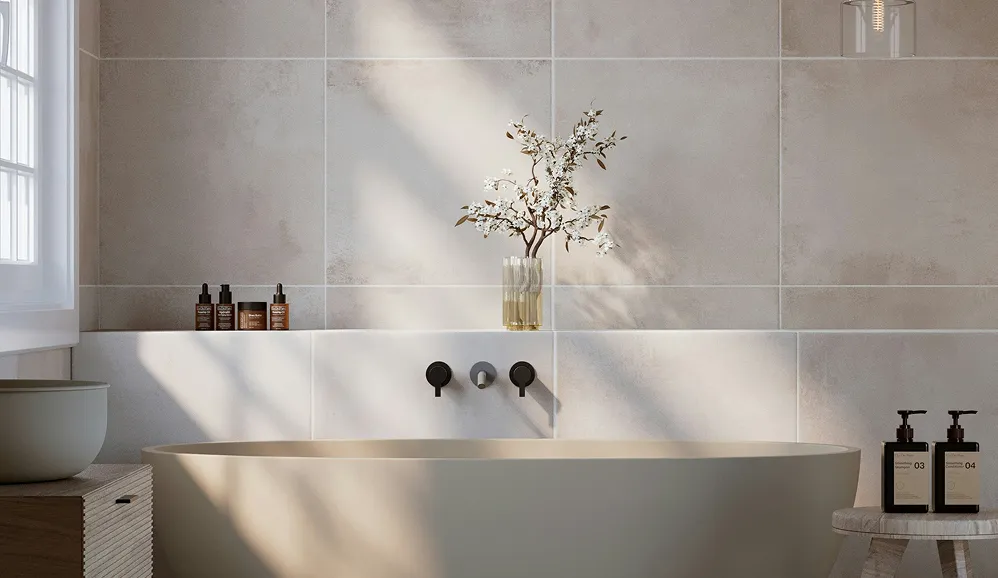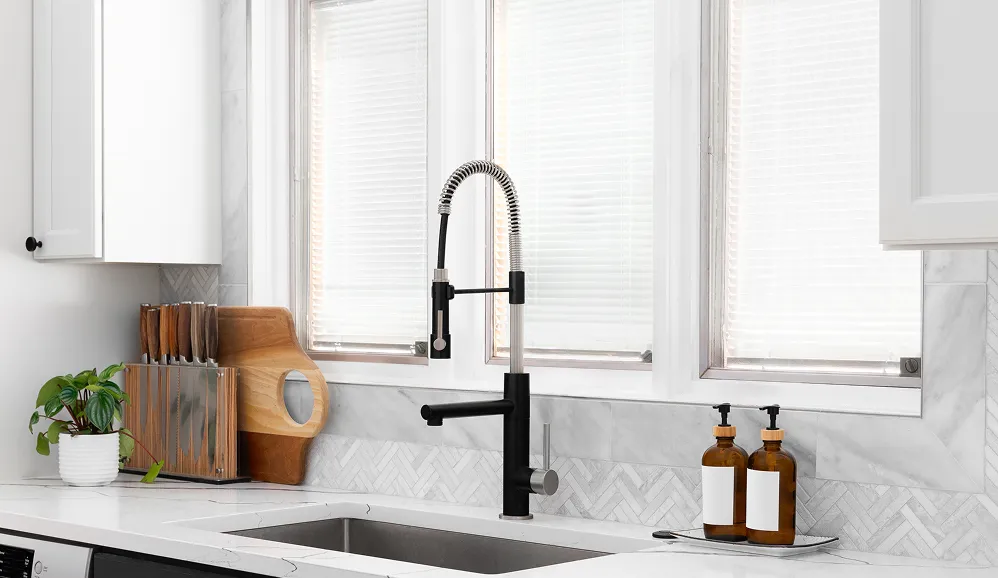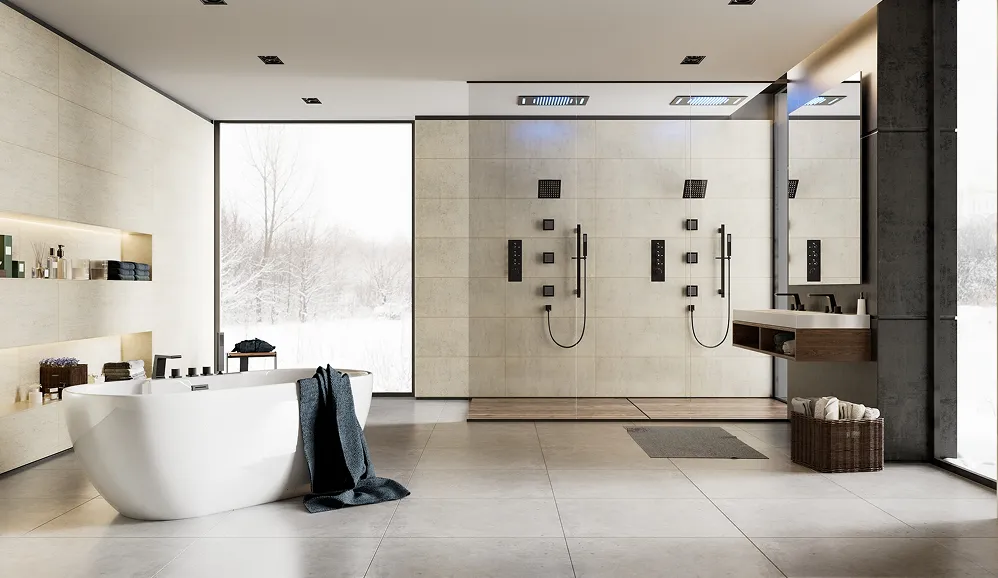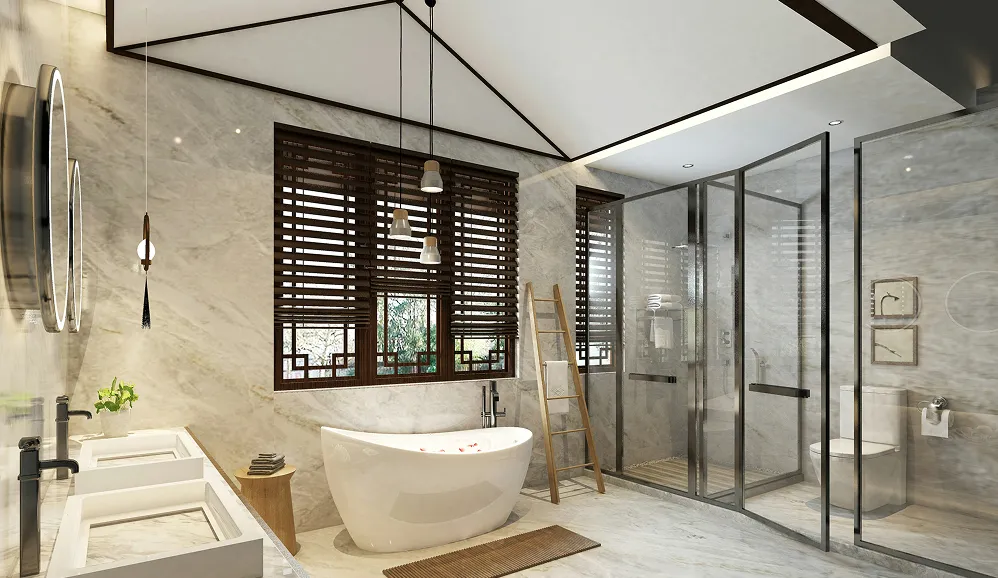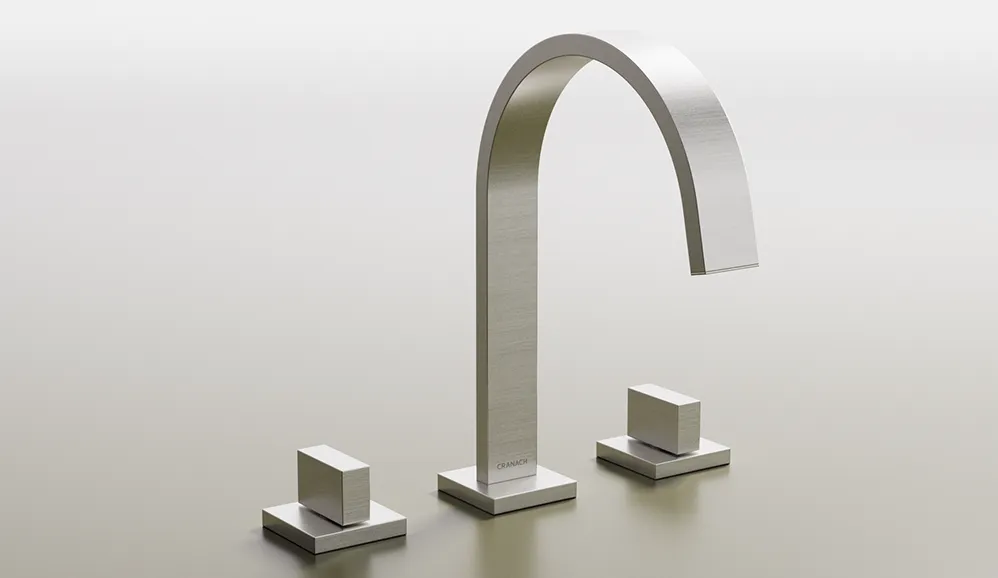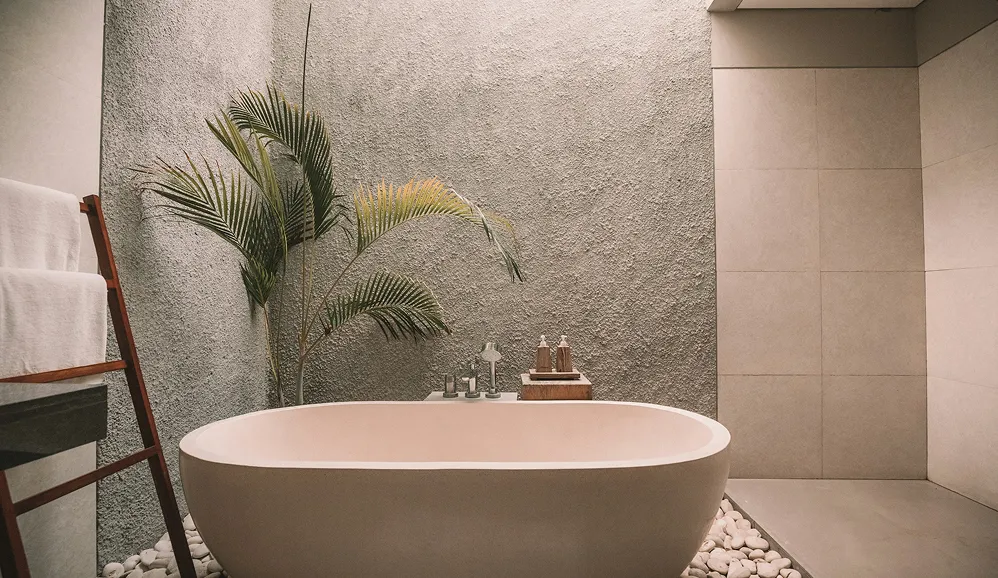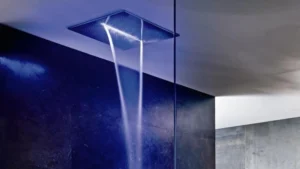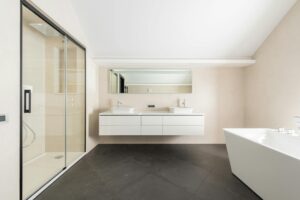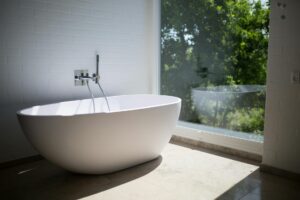So, you’re wondering, how much is a walk in shower? The short answer is that a new installation averages around $7,500. But let’s be real, that number is just a starting point.
The final price tag can swing wildly, from a budget-friendly $3,170 for a basic setup to over $11,495 if you’re pulling out all the stops for a luxury, custom-built oasis.
What Is the Real Cost of a Walk In Shower?
Trying to pin down the cost of a walk-in shower with a single number is a bit like trying to price a car without knowing the make, model, or any of the extras. The final bill really comes down to your personal choices in materials, the overall size, and how complex the installation gets.
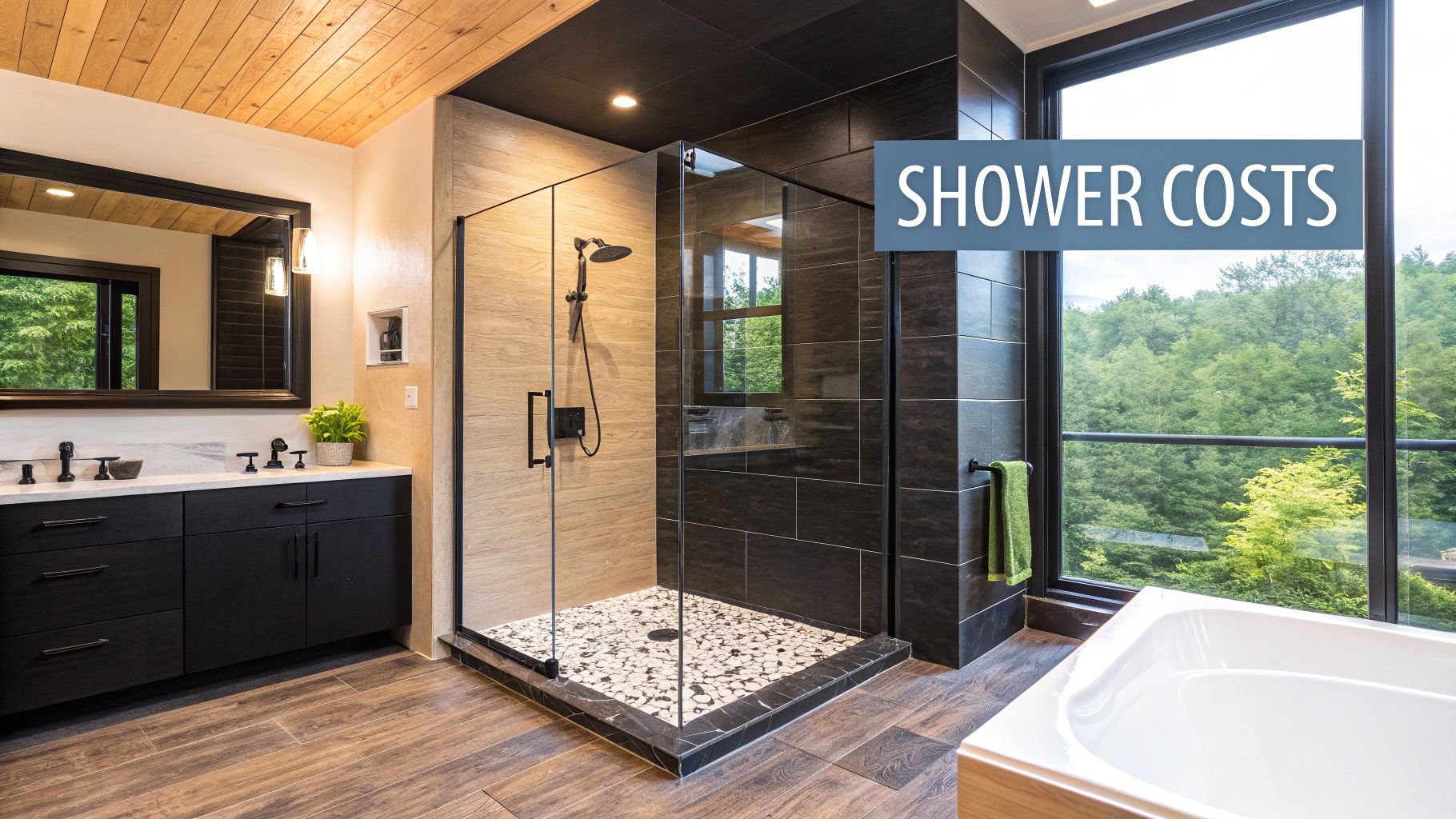
Whether it’s a brand-new build or a much-needed remodel, the scope of your project is what truly drives the cost. It might surprise you to learn that materials often eat up the biggest chunk of the budget—sometimes as much as 91.5%. Think about it: heavy, thick glass panels and high-quality floor treatments don’t come cheap.
Walk-In Shower Cost at a Glance
To give you a clearer picture of where your dream shower might land financially, we’ve put together a simple table. This breaks down the typical cost tiers, helping you see what’s possible before we get into the nitty-gritty details.
| Project Tier | Average Cost Range | Common Features |
|---|---|---|
| Basic/Budget | $3,000 – $5,000 | Prefabricated acrylic kit, basic fixtures, standard glass door. |
| Mid-Range | $5,000 – $9,000 | Ceramic/porcelain tile, semi-frameless glass, upgraded fixtures. |
| Luxury/Custom | $9,000+ | Natural stone, frameless glass, built-in benches, multiple showerheads. |
This table should help you match your vision to a realistic budget. A simple, clean prefabricated unit is perfectly achievable at the lower end, while a spa-like retreat with all the custom touches will naturally sit at the higher end.
Essential Cost Factors to Consider
Beyond the shower unit itself, it’s crucial to think about the plumbing. This is one of those hidden costs that can sneak up on you. If you need to move drains or reroute water lines to make your new layout work, that will add a significant amount to your labor costs. To get a feel for what professionals charge, you can look into the general cost of plumbing services in Denver as a benchmark.
Decoding Your Walk-In Shower Remodel Costs
Ever wondered why one walk-in shower quote comes in at $4,000 while another soars past $10,000? It’s all in the details. Think of it like building a custom car—every single part you pick, from the engine right down to the paint job, shapes the final price tag. Your shower remodel is exactly the same.
This process isn’t just about picking pretty tiles. It’s about making smart choices that align with your budget and vision. That’s where effective home construction project management comes in, helping you sidestep expensive delays and keep your budget on track.
Prefab Kits vs. Custom Builds
The biggest fork in the road, and the one that will have the most impact on your budget right from the start, is choosing between a prefabricated (prefab) kit and a completely custom-tiled shower. It’s really the difference between buying a suit off the rack versus having one tailored just for you.
- Prefabricated Kits: These are your all-in-one solutions, usually made from acrylic or fiberglass. They’re quicker to install and much friendlier on the wallet, making them a fantastic choice if getting the job done fast and affordably are your main goals.
- Custom Tiled Showers: This path gives you total creative freedom. You can hand-pick any tile you dream of, from classic ceramic to luxurious marble, and design a shower that fits your space and style perfectly. But, as you can imagine, this level of personalization comes with more intensive labor and higher material costs.
The Impact of Materials and Fixtures
Once you’ve decided between prefab and custom, the specific materials you choose start to play a huge role. Acrylic is a solid, cost-effective, and low-maintenance option. On the other hand, going with natural stone or intricate mosaic tiles will definitely push the price tag higher.
Even the type of glass door makes a difference. A standard framed door is far less expensive than the heavy, frameless glass enclosures that give you that seamless, modern look.
And don’t forget the fixtures—they add up. Swapping a basic shower head for a premium shower system with multiple spray functions will bump up the total. If you’re looking at new fixtures, our guide on faucet installation cost can be a big help for figuring out your budget.
A top-tier shower system, like the ones we offer at CRANACH, can turn your daily shower into a genuine spa-like retreat. It’s an investment, for sure, but it’s one that adds serious value and a whole lot of enjoyment to your finished project.
Prefab vs. Custom Showers: A Head-to-Head Comparison
Right out of the gate, one of the biggest decisions you’ll make is choosing between a prefabricated shower kit and a fully custom-built shower. This choice really sets the tone for your project’s budget, timeline, and what your final bathroom will look like. It’s the classic trade-off: do you want speed and convenience, or complete creative freedom?
Prefabricated units are the all-in-one champs when it comes to efficiency. These kits, usually made from tough acrylic or fiberglass, come with perfectly matched walls and a shower pan. This seriously cuts down on installation time and the labor bill, making them a fantastic choice if you’re on a tight budget or just can’t have your bathroom out of commission for weeks.
On the other hand, a custom shower is like a blank canvas. There are absolutely no limits on the design, size, or materials you can use. This is the path for you if you want to create a shower that fits perfectly into an unusual layout—whether it’s an awkward corner or a grand, open-plan master bath.
Weighing Your Options
The decision usually boils down to how much you’re willing to spend versus how specific your design vision is. Walk-in showers have become incredibly popular, and that trend has definitely influenced the pricing for both routes. A prefabricated walk-in shower is much easier on the wallet, with complete units averaging around $1,850.
A custom-built shower, however, starts at an average of $6,350 and can go up from there. That higher price tag reflects the premium materials and the skilled, intensive labor needed for a one-of-a-kind build. You can dig into more of these cost details with authoritative sources like the National Kitchen & Bath Association.
Here’s the key takeaway: that higher upfront cost for a custom shower is buying you total design freedom. This covers everything from the exact tile pattern to built-in benches, custom niches, and integrating a high-end shower system.
And don’t forget, where you live plays a big part in the final walk in shower cost.
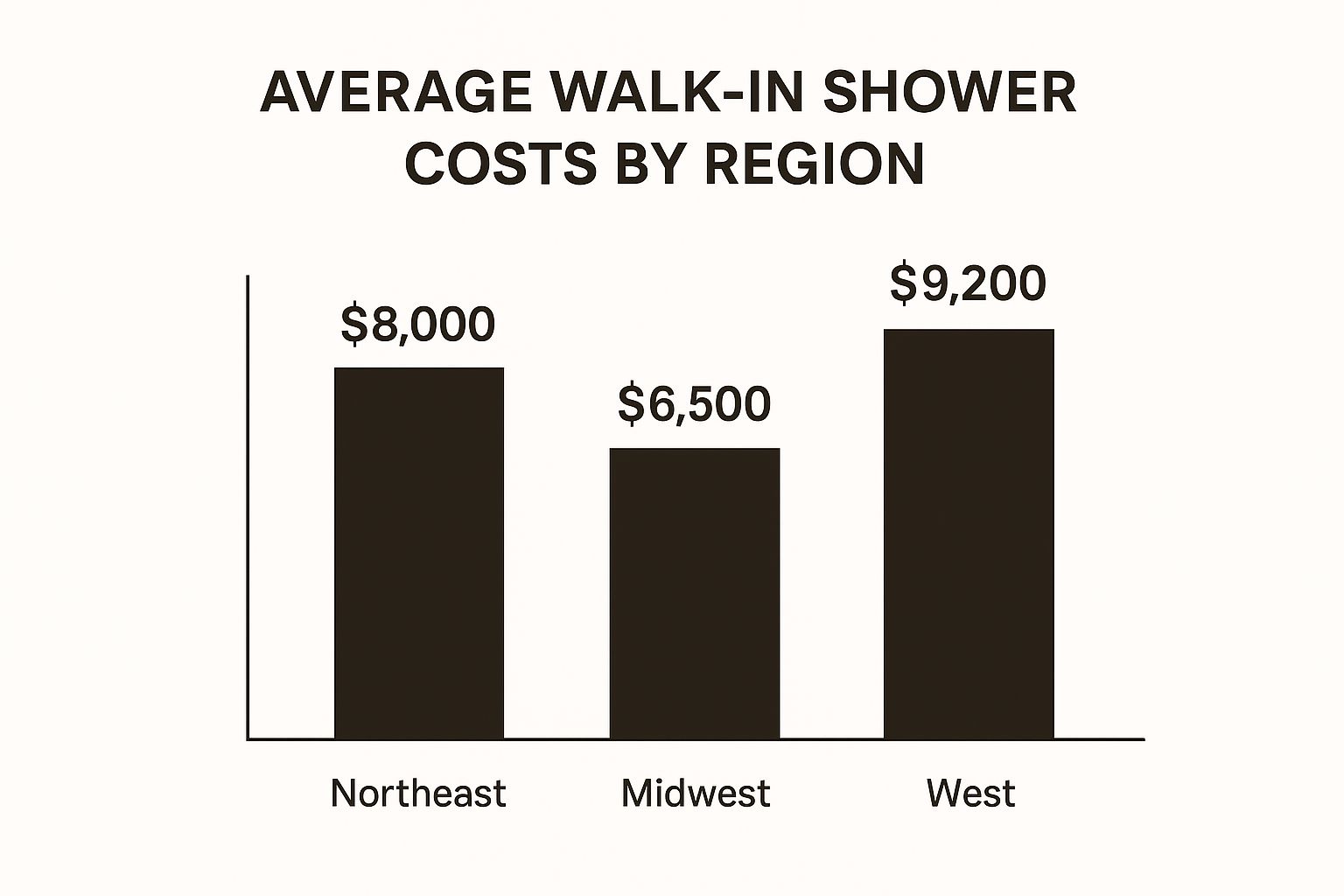
As you can see, folks in the West tend to pay the most. It’s a clear reminder of how much regional labor rates and material prices can swing your budget.
Prefabricated vs. Custom Shower Comparison
To help lay it all out, a side-by-side comparison can make the choice a lot clearer. Think of this as a cheat sheet to see which approach aligns better with your priorities.
| Feature | Prefabricated Shower | Custom Shower |
|---|---|---|
| Average Cost | Lower ($1,850 – $4,850) | Higher ($6,350 – $15,000+) |
| Installation Time | Faster (1-3 days) | Slower (1-3 weeks) |
| Customization | Limited to kit options | Nearly unlimited |
| Materials | Primarily acrylic/fiberglass | Tile, stone, glass, etc. |
| Best For | Budget-conscious projects, standard spaces, speed. | Unique layouts, high-end designs, personalization. |
At the end of the day, a prefab unit is all about getting excellent value and getting your bathroom back quickly. A custom build is an investment in a space that is truly, uniquely yours—a slice of personal luxury.
And no matter which path you take, a top-tier shower system from CRANACH is the perfect finishing touch. It brings that bit of modern luxury and reliable performance that makes your daily routine feel special.
How Upgrades and Materials Shape Your Final Price
The little details are what turn a functional shower into a personal spa, but they also have a big impact on your final bill. Figuring out how much a walk-in shower is really comes down to the materials and upgrades you select. Think of it like ordering a pizza—the basic cheese pie is affordable, but every premium topping you add drives up the price.
Your choice of tile is a perfect example. Standard ceramic or porcelain tiles are a durable and wallet-friendly option. But if your heart is set on something more luxurious like marble, natural stone, or intricate mosaic patterns, you can expect both the material and labor costs to climb. These premium materials don’t just cost more to buy; they also demand more skill and time to install correctly.
From Standard to Spa-Worthy
Beyond the tile, every single upgrade you add contributes to the final project cost. These features are where you can really customize your shower experience, but they also require careful budgeting. When you’re planning your budget, a construction material cost predictor can be a handy resource for getting a ballpark idea of what different components will set you back.
Here are a few popular upgrades and how they affect your bottom line:
- Frameless Glass Doors: These give you that seamless, modern look but require thicker, more expensive glass and specialized installation. It’s a very different job compared to hanging standard framed or semi-frameless doors.
- Built-In Benches: A tiled, built-in bench adds a real touch of luxury and accessibility. However, it also adds labor for framing, extensive waterproofing, and tiling.
- Recessed Shelving (Niches): Perfect for streamlined storage, niches look simple but require extra framing and meticulous waterproofing to prevent leaks down the road. That extra care adds to the labor cost.
- Steam Generators: Turning your shower into a private steam room is a true high-end upgrade. It involves pricey equipment plus specialized electrical and plumbing work by qualified professionals.
Investing in Value and Experience
Custom-tiled walk-in showers really dominate the higher end of the market, both in cost and in the level of customization you can achieve. Prices for these kinds of projects can range anywhere from $3,500 to as much as $15,000, all depending on the size, tile quality, and your list of add-ons.
A high-performance shower system is a worthwhile investment. After all, the experience is only as good as the water flow, so a powerful fixture from CRANACH can make a world of difference in your daily routine. If you’re concerned about your home’s water pressure, you might find our guide on how to increase water pressure in your shower helpful.
By strategically investing in the upgrades that matter most to you, you can create a high-end experience without letting your budget spiral out of control.
Choosing the Right Shower System for Your New Space
While tile and glass get all the attention for a shower’s look, the shower system is what truly makes or breaks the whole experience. It’s the engine that powers your daily ritual. Getting this part right is what turns a basic shower into your own personal retreat, affecting everything from how safe you feel to how much you enjoy it.
Think of it this way: a high-quality shower system, like those from CRANACH, elevates your walk-in shower from just another utility to a centerpiece of modern comfort. These aren’t just collections of pipes and knobs; they’re thoughtfully designed to perform beautifully and match the sleek, clean aesthetic of a modern bathroom.
Here’s a glimpse of the kind of sophisticated options you’ll find in the CRANACH shower system collection.
You can see how a premium shower system, with both a luxurious overhead rainfall head and a practical handheld wand, fits perfectly into a high-end walk-in shower. This isn’t just a fixture—it’s a core piece of the room’s entire function and style.
Key Components to Consider
Getting familiar with the different parts of a shower system helps you make a choice you’ll be happy with for years. The single most important part is the valve, the behind-the-scenes workhorse controlling your water temperature and pressure.
A feature you absolutely want to look for is a thermostatic valve. Unlike older pressure-balanced valves, a thermostatic one holds your chosen water temperature exactly where you set it. This protects you and your family from a sudden, dangerous blast of scalding water if someone flushes a toilet elsewhere in the house.
Beyond safety, you get to decide on the kind of experience you want.
- Rainfall Showerheads: These are all about relaxation. They provide a gentle, wide spray that feels like standing in a warm summer downpour.
- Handheld Wands: You’ll wonder how you ever lived without one. They’re essential for rinsing shampoo out of long hair, washing kids and pets, and making it much easier to clean the shower itself. Our guide on how to clean a shower head can help you keep your new fixtures sparkling.
- Body Jets: If you want a true spa-like massage right at home, body jets can be installed on the walls. They create a hydrotherapy experience that can soothe sore muscles after a long day.
Ultimately, choosing a superior shower system isn’t just about answering how much is a walk in shower; it’s an investment in your daily comfort, safety, and lasting quality. A brand like CRANACH ensures your new shower performs just as beautifully as it looks.
Common Questions About Walk-In Shower Costs
As you start to nail down your plans, it’s natural for a bunch of questions to pop up, especially around the budget. Figuring out how much a walk in shower is usually just opens the door to more specific worries about hidden costs and potential problems. Let’s tackle the most common questions homeowners ask so you can budget with confidence and sidestep any nasty surprises.
Does Converting a Tub to a Shower Cost More?
Yes, almost always. Swapping a tub for a shower is a much bigger job than just replacing an old shower, and that extra labor adds up on the final bill.
Think about it: you have to demolish the old tub, which is heavy and messy, then haul away all that debris. The real kicker is the plumbing. A tub’s drain is in a completely different spot than a shower’s, meaning a plumber has to get in there, tear up the subfloor, and rework the pipes. Those extra steps can easily tack on several hundred to over a thousand dollars to your total walk in shower cost.
Can I Save Money with a DIY Installation?
The short answer is yes, you can save a few thousand on labor. But it’s a high-stakes gamble. The idea of doing it yourself is tempting, but the most crucial part of the job—the waterproofing—is completely unforgiving.
One tiny mistake when applying the waterproof membrane can lead to a slow, silent leak. You won’t see it for months, maybe years, but behind the wall, it’s causing thousands of dollars in mold, rot, and structural damage. Tiling and plumbing also demand a level of precision that’s tough to achieve without experience if you want it to look professional and work right.
Unless you have serious, hands-on experience with bathroom remodels, hiring a licensed and insured contractor is the smartest investment you can make. It’s your peace of mind that the shower will be durable, leak-free, and built to last.
What Hidden Costs Should I Budget For?
It’s what’s behind the walls that can really throw your budget for a loop. Beyond the obvious material and labor costs, it’s smart to plan for surprises that often appear once the demolition starts.
Here are a few of the usual suspects:
- Permits: Your town or city might require a permit, depending on how big the job is.
- Demolition & Disposal: The fees for tearing out the old stuff and carting it away can add up.
- Damage Remediation: It’s common to find old water damage, mold, or rotted wood once the old walls come down. That has to be fixed before anything new goes in.
- Surprise Updates: Sometimes, a contractor will uncover ancient plumbing or outdated electrical wiring that has to be brought up to current code.
A good rule of thumb is to set aside a contingency fund of 10-15% of your total estimated budget. This buffer gives you the breathing room to handle these unexpected issues without derailing the whole project.
How Long Does Installation Take?
The timeline really hinges on how complex your new shower will be. If you’re going with a straightforward prefabricated unit, a pro can often get it done in just 2-4 days.
A fully custom-tiled shower, on the other hand, is a much more drawn-out affair. You’re looking at a timeline of anywhere from 1 to 3 weeks. This longer schedule accounts for all the stages: demolition, plumbing and electrical rough-ins, installing the shower pan, meticulous waterproofing, tiling, and waiting for mortar and grout to cure properly before the glass and fixtures can go in.
Keep in mind that sourcing custom materials or a high-end shower system can also add to the wait time, so plan ahead. It’s those little details that truly create a complete experience, which is why trends like the “everything shower” have caught on. To dive deeper into what that means, check out our guide that answers the question, what is an everything shower for a woman?

